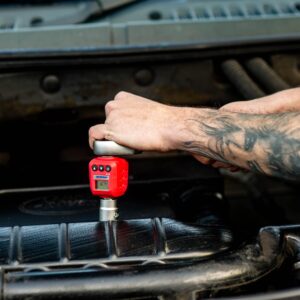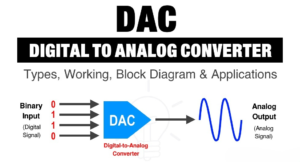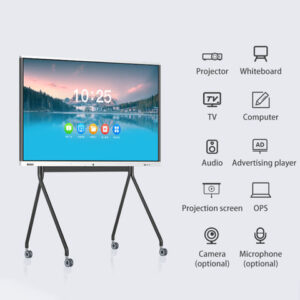As a Digital Creator, I’ve witnessed the remarkable evolution of photography with the rise of digital cameras. Nowadays, these devices boast an extensive array of features and functionalities, rendering them essential tools for both professional photographers and enthusiasts. For anyone seeking to invest in a new digital camera and aiming to make a well-informed decision, we’ve curated a list showcasing some of the finest options on the market.
1. Canon EOS 5D Mark IV
The Canon EOS 5D Mark IV is a top choice for professional photographers. It features a full-frame 30.4-megapixel sensor, excellent low-light performance, and a wide ISO range. The camera also boasts impressive autofocus capabilities and a fast burst rate of 7 frames per second. With its robust build quality and weather sealing, the 5D Mark IV is suitable for various photography genres, including landscape, portrait, and wildlife photography.
2. Nikon D850
The Nikon D850 is another excellent option for photographers seeking exceptional image quality and versatility. This full-frame camera offers a whopping 45.7-megapixel sensor, enabling you to capture stunningly detailed images. The D850 also boasts an impressive dynamic range and excellent low-light performance. With its advanced autofocus system, fast burst rate, and 4K video capabilities, the D850 is a versatile tool for both photography and videography.
3. Sony Alpha A7R IV
Sony’s Alpha A7R IV is a mirrorless camera that packs a punch in terms of image quality and performance. It features a full-frame 61-megapixel sensor, offering unrivaled resolution for capturing intricate details. The camera’s autofocus system is highly advanced, with 567 phase-detection autofocus points that cover approximately 99.7% of the frame. The A7R IV also boasts impressive video capabilities, including 4K recording and in-body image stabilization.
4. Fujifilm X-T4
For photographers who prefer a more compact and lightweight option without compromising on image quality, the Fujifilm X-T4 is an excellent choice. This mirrorless camera features a 26.1-megapixel APS-C sensor and Fujifilm’s renowned X-Trans CMOS 4 technology, delivering impressive image quality with vibrant colors and excellent dynamic range. The X-T4 also offers in-body image stabilization, a versatile autofocus system, and robust video capabilities, making it suitable for various photography styles and genres.
5. Olympus OM-D E-M1 Mark III
If you are looking for a camera that excels in portability and versatility, the Olympus OM-D E-M1 Mark III is worth considering. This Micro Four Thirds camera features a 20.4-megapixel sensor and Olympus’ powerful image stabilization system, which provides up to 7.5 stops of compensation. The E-M1 Mark III offers advanced autofocus capabilities, a high-speed burst rate of 60 frames per second, and a compact, weather-sealed body. It is an excellent option for photographers who prioritize mobility without compromising on image quality.
Frequently Asked Questions about Choosing the Best Digital Camera
1. What factors should I consider when choosing a digital camera?
Several factors play a crucial role in selecting the right digital camera. Key considerations include sensor size, resolution (megapixels), lens options, camera size and weight, autofocus capabilities, video recording features, connectivity options, and budget.
2. What’s the difference between a DSLR and a mirrorless camera?
DSLRs (Digital Single-Lens Reflex) use a mirror mechanism and an optical viewfinder to capture images. On the other hand, mirrorless cameras skip the mirror, utilizing an electronic viewfinder or rear LCD screen for image composition. Mirrorless cameras are generally more compact and lighter than DSLRs.
3. Is a larger sensor always better for image quality?
A larger sensor often contributes to improved image quality, especially in low-light conditions and dynamic range. However, smaller sensors can still produce excellent results, especially in well-lit environments.
4. How important is lens selection when choosing a camera system?
The availability of compatible lenses is vital, especially if you have specific photography interests like portraits, landscapes, or macro shots. A diverse lens lineup allows for greater creativity and flexibility in capturing different types of images.
5. Can I use lenses from one brand on a different brand’s camera?
In most cases, lenses are specific to camera brands due to different mount systems. However, certain adapters may allow the use of lenses across brands, although functionality might be limited.
Conclusion
Choosing the best digital camera for photography depends on your specific needs, preferences, and budget. The Canon EOS 5D Mark IV, Nikon D850, Sony Alpha A7R IV, Fujifilm X-T4, and Olympus OM-D E-M1 Mark III are all exceptional options, each with its own strengths and features. When selecting a camera, consider factors such as image quality, autofocus performance, low-light capabilities, video capabilities, and overall ergonomics. It is also important to try out different cameras and assess how they feel in your hands before making a final decision. Remember, the best camera is the one that suits your unique shooting style and helps you capture the images you envision.








Be First to Comment